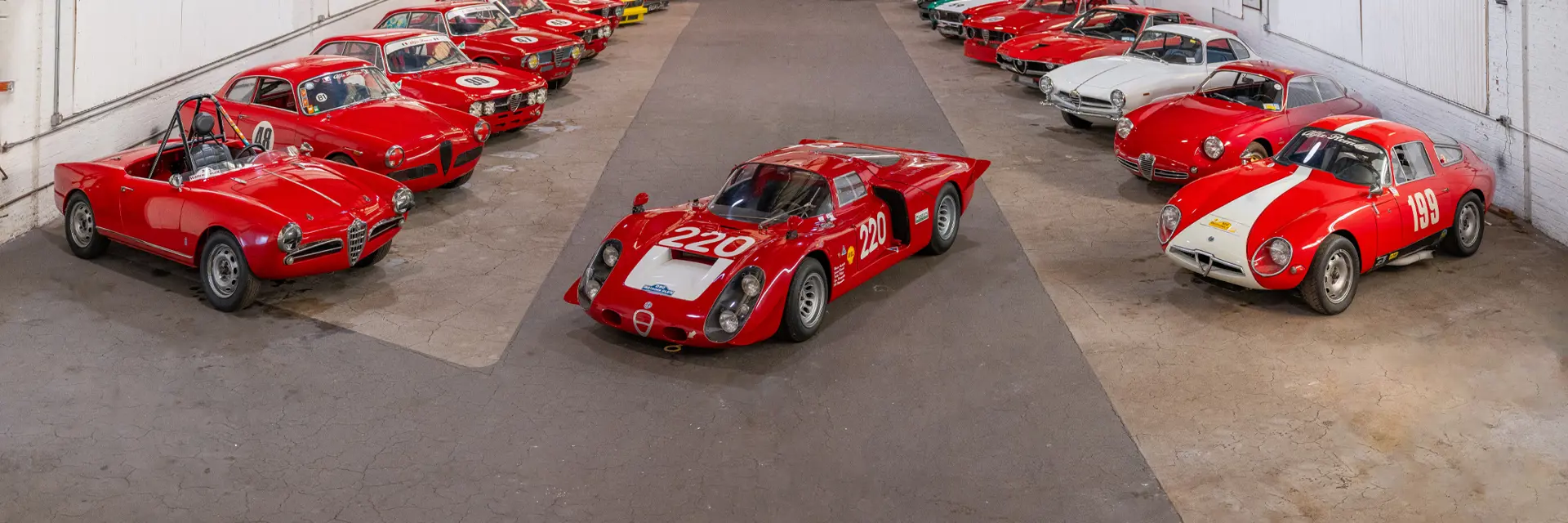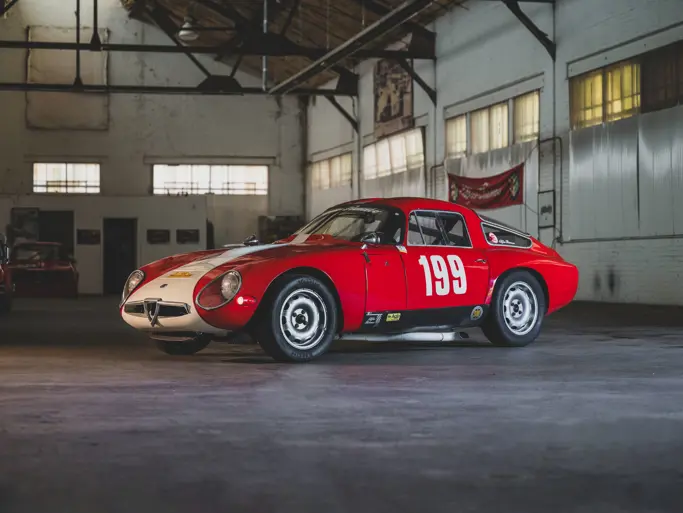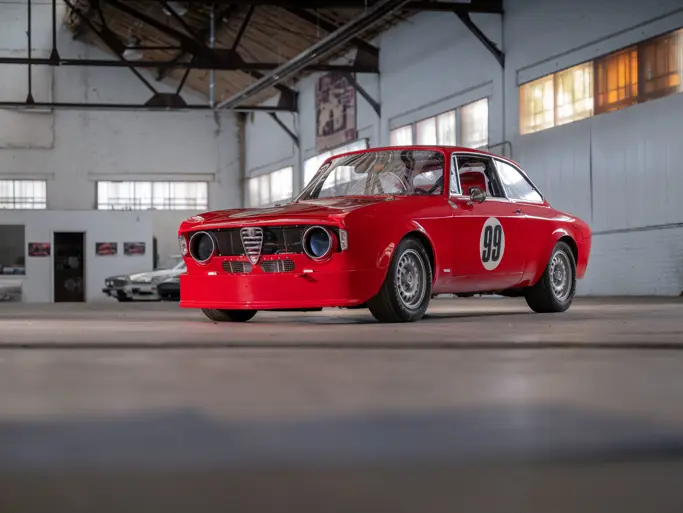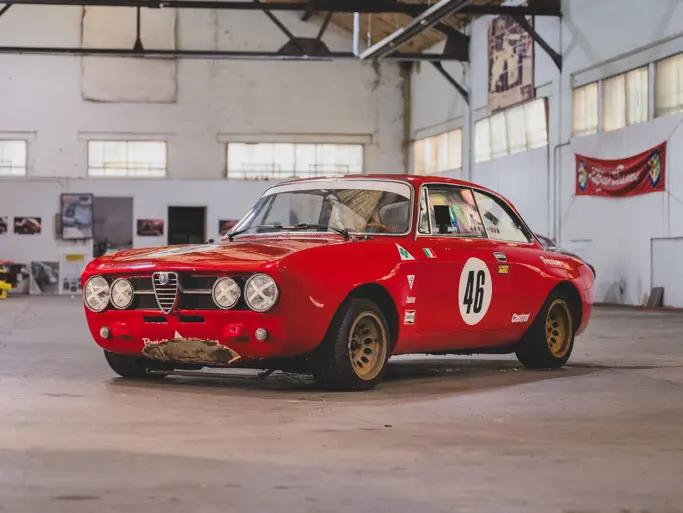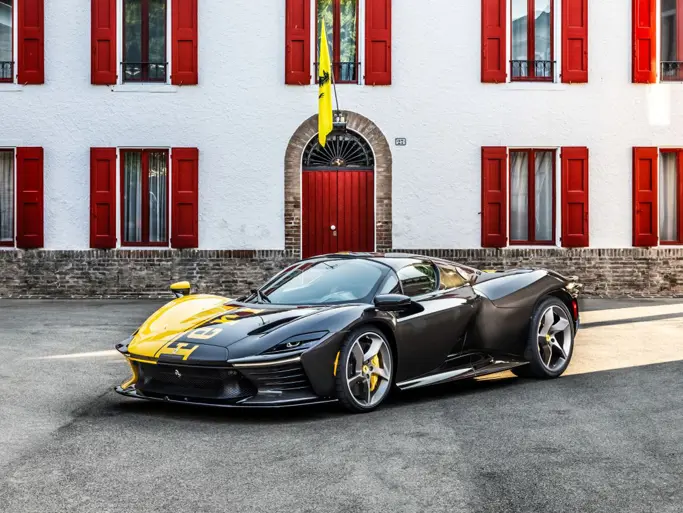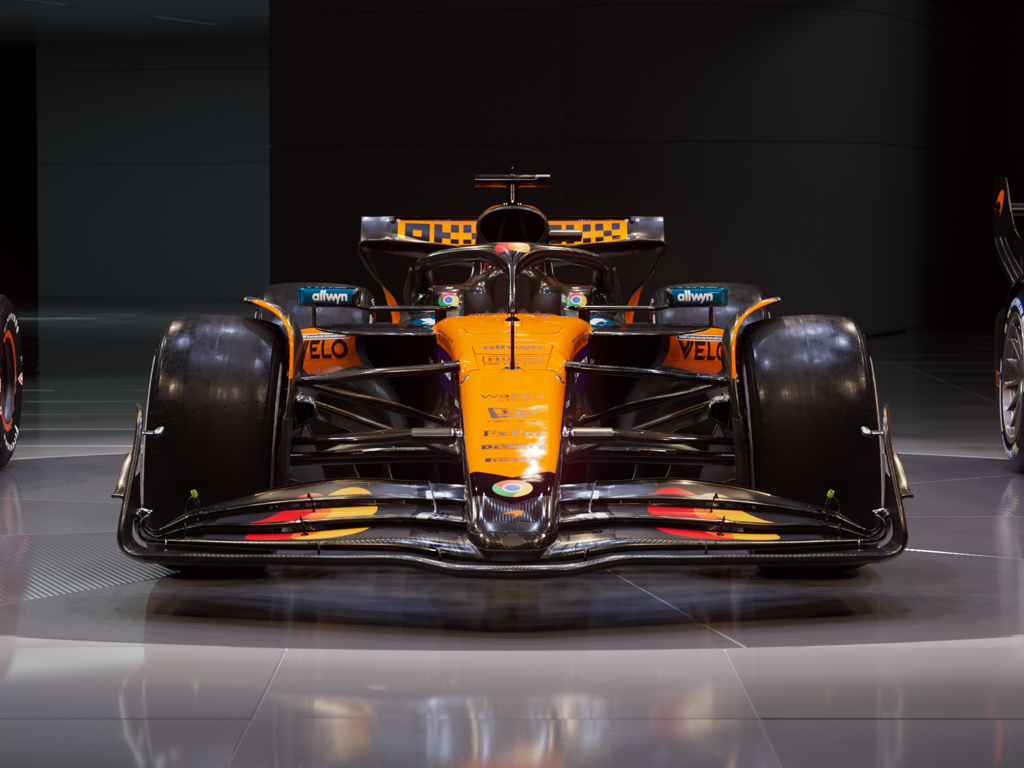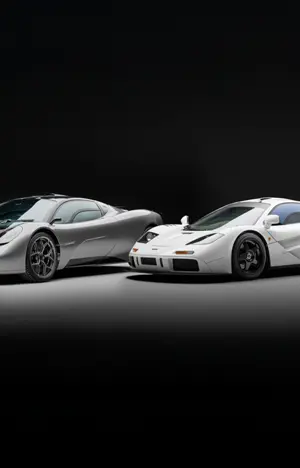There’s something special about Alfa Romeos—a certain sense of fun and mischief that runs through every model, no matter how pedestrian they may be on paper. Even the humble Alfasud showed glimmers of the firm’s motorsport heritage, and while the marque went through stages of being known for low-quality steel and poor reliability, at their heart the Milanese manufacturer’s machines will always be driver’s cars. Without Alfa Romeo there would be no Ferrari, and though legends of the pre-war era such as the 6C 1750 Gran Sport Spider are rightly championed, it is perhaps the racing exploits of the 50s, 60s, and 70s that properly fermented the love of the brand for so many—an era represented at our Monterey auction in the 11-strong Quadrifoglio Collection. We’ve singled out five of our favourites—which one is yours?
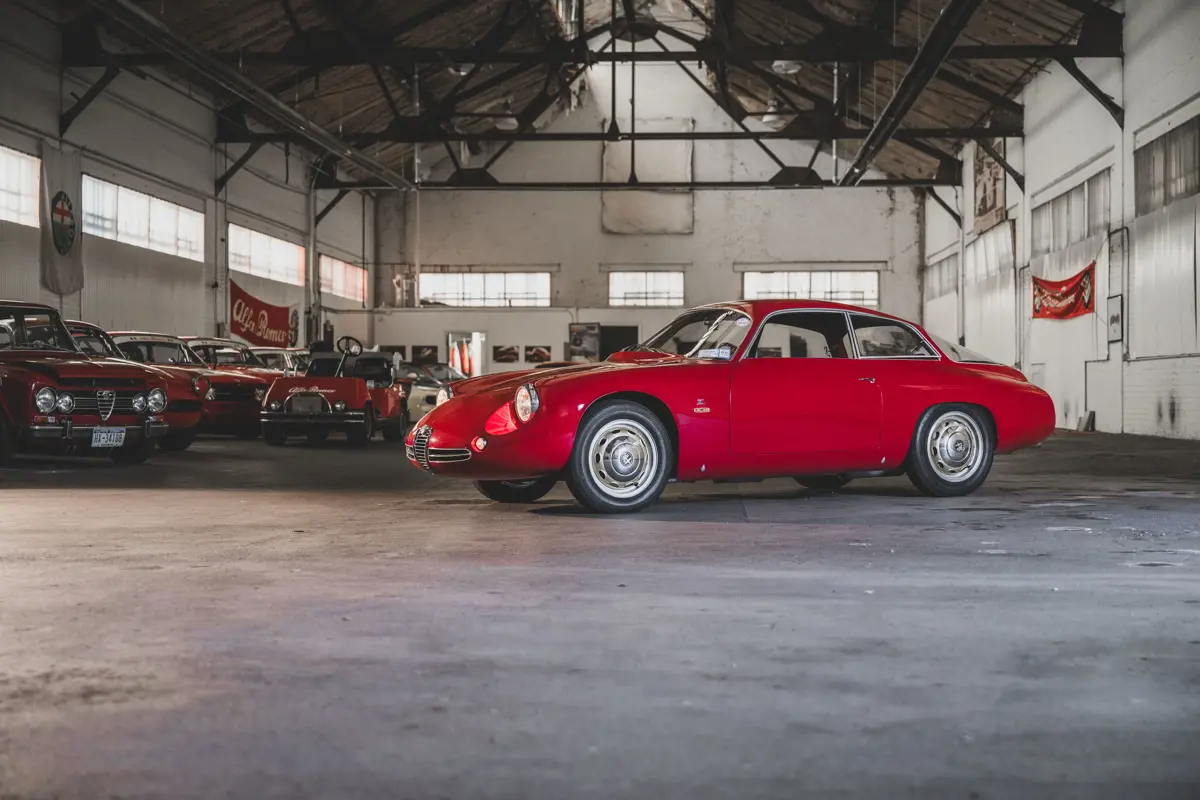
1961 Alfa Romeo Giulietta SZ 'Coda Tronca'
Alfa Romeo had long turned to independent carrozzeria for lighter, wind-cheating bodies to give its cars the leading edge, and Zagato were key players, just like in the dominating pre-war era. The SZ not only demonstrated the effectiveness of lightweight aluminium, but its design was at the cutting edge of aerodynamic theory. The Coda Tronca (truncated tail), designed by Ercole Spada, used the principles laid out via scientist Wunibald Kamm which ran counter to the concepts of extended ‘fuselages’ that had become the accepted wisdom in streamlined aerodynamics. The theory became reality very effectively: the Kammback SZ models swooped to victory in the 1.3-litre class of the International Championship for GT Manufacturers in 1962 and 1963.
This Alfa Romeo SZ is one of just two examples (alongside chassis 0201) dispatched to the marque’s US subsidiary in Newark, New Jersey, for use by the fledgling Martini & Rossi Racing Team. Completed in October 1961 and finished in Rosso Alfa, as confirmed by factory records, chassis 0200 arrived in the US where it bore simple “Martini & Rossi Racing Team” script on its flanks; the famous livery had yet to be conceived. At the Daytona Continental 3-Hour in February 1962, Paul Richards secured 2nd in class, just behind teammate Charlie Kolb in the sister car. A month later, the car completed the gruelling 12 Hours of Sebring before appearing on display at the New York International Auto Show.
In September, it finished 3rd in class and 5th overall at the under-2-litre Bridgehampton 400 KM. It likely took part in the Bahamas Speed Week that December. Prior to the 1963 Sebring event, its original Facetti-tuned 1300 engine was replaced with a 1600 Veloce-spec unit, although the car never raced.
Later owned by Alfa Romeo US employee Joe Amato, it passed through the hands of six collectors before the current owner acquired it in 2016. Since then, it has been properly restored with a correct 00120-series engine and Weber DCOE/2 carburettors. One of 41 Coda Tronca cars built and one of the first two Martini & Rossi cars entered in competition, it is estimated to fetch between $400,000 - $500,000.
Pour yourself a cocktail and imagine mixing it up in the historic paddock.
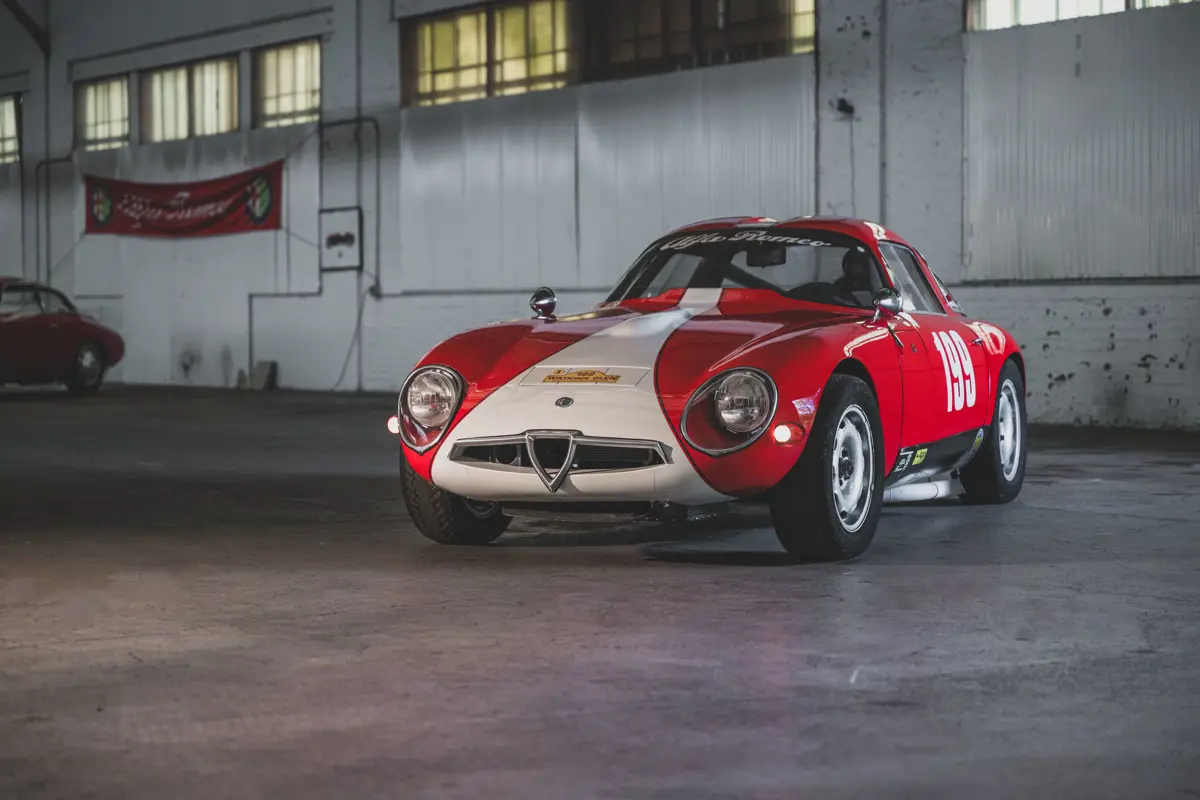
1964 Alfa Romeo Giulia TZ-1 'Double Bubble’
Alfa Romeo’s collaboration with Zagato had proved successful with the Giulietta SZ, but the firm wanted to go up a class to contest the 1.6-litre GT category. Alfa Romeo’s racing arm, Autodelta, and Zagato combined to create the purpose-built TZ using the proven mechanical underpinnings of the Giulia but wrapped in a lighter, more aerodynamic package that further developed the Kammback tail philosophy. With 160 brake-horsepower and just 660 kilograms to carry, the TZ proved to be a giant-killer, winning its class at Sebring, the Nürburgring, and the Targa Florio. Just 100 were built and it soon became a popular choice among privateer racers.
Having such a celebrated novelist as Vladimir Nabokov as your father might have caused a lesser person to take the foot off the gas, but Dimitri was very different. He was many things, aside from a writer himself; he was an opera singer, translator, and an athlete. However, he was a full-on petrolhead, too.
Completed in April 1964, chassis 750061 was finished in Bianco with Nero leather and fitted with a rare “double-bubble” roof. This feature was reportedly requested by Dimitri. Standing nearly six-foot-five with a helmet on, he claimed to need the extra headroom. As such, this is believed to be the only TZ-1 delivered new with the double-bubble roof, marking it out as a one-off from day one, though it has become a signature Zagato design style that is still referenced in new cars today.
Nabokov raced the car extensively. He handed preparation duties to the highly regarded Carlo Facetti, and over 18 months 750061 was entered in 23 events across Europe. It proved quick and reliable, claiming class wins and podium finishes at venues including Monza and several hillclimbs. In April 1965, it placed 4th in class at the 1000 Kilometres of Monza.
By August that year Nabokov had moved on. The Alfa was sold to Australian driver and dealer Alec Mildren, who soon passed it to Sydney’s Max Brunninghausen. In February 1966, Brunninghausen took an outright win at the Warwick Farm International, part of the Tasman Championship. When he secured a TZ-2, the car was traded back to dealer Roy Compton. Some sources suggest it continued racing into 1967 under Ian Hindmarsh Motors, despite the change of hands.
For 1968, Compton repainted the Alfa in bronze and installed updated mechanicals, including what is thought to be the engine still in place today. Disqualified soon after on a technicality, the car was detuned and sold to Fred Calloway.
The TZ passed through several more owners, and by 1984 was in the care of Nick and Leonie Langford. It remained in Australia until 1991, when it was acquired by the vendor. The new owner wasted no time returning it to the track. During the 1990s it competed at vintage events including Moroso, Sebring, and Watkins Glen. In the 2010s it underwent further preparation. A new fuel bladder, correct-spec ring and pinion, and a bespoke airbox in factory style were installed, and the 536-series Giulia GT engine, fitted while it was in Australia, was rebuilt. The question is whether to enjoy it as is, or restore to its original condition—even if that might be like its first customer’s specification, a tall order. You’ll need between $700,000 - $900,000 to find out.
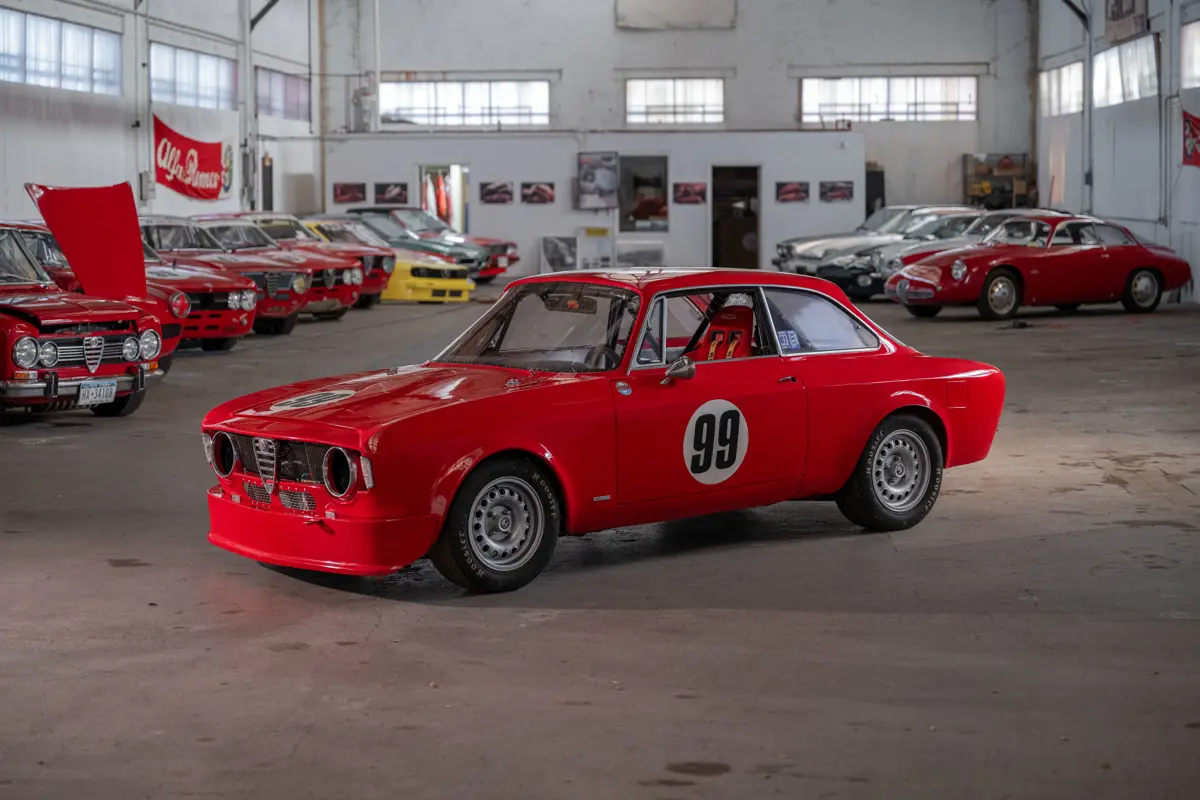
1966 Alfa Romeo Giulia Sprint GTA
This year marks six decades since the launch of the Alfa Romeo Giulia GTA. The A stood for Alleggerita, Italian for lightweight, and it certainly was. Thanks to the extensive use of aluminium body panels, plus magnesium for the wheels, sump, valve covers, and elsewhere, as well as a host of other changes, it tipped the scales at 740 kilograms. It subsequently went on to win 200 races in a long racing career, morphing into the 1300 Junior and GTAm.
The important factor was that these homologation specials looked just like the standard Giulia GTs—a direct link from racetrack to showroom, and unlike a lot of other cars that flattered to deceive, the normal road cars had proper sporting verve.
This 1966 Alfa Romeo Giulia Sprint GTA has been under the care of its current owner since 1986, as confirmed by the original purchase agreement on file. Not long after acquisition, the car was sent to the United Kingdom for a full nut-and-bolt restoration. A detailed set of photographs documents the entire process, from bare-metal preparation through to a meticulous rebuild carried out to an exceptional standard.
In 1987, shipping records show the GTA was imported into the United States, where it has remained ever since. The accompanying vintage racing logbook reveals that the car saw regular use on track throughout the late 1980s and early 1990s, taking part in several historic racing events and clearly offering its owner plenty of enjoyment behind the wheel.
In early 2008 the Alfa received a further round of work to bring it up to fresh mechanical condition. This time, the restoration was entrusted to Newman Wachs Racing and carried out by Horst Kwech, a renowned mechanical engineer and former SCCA champion. As part of this refresh, the engine was replaced with unit number AR00502 15828, believed to have originated from a 1965 Giulia GTC. It’s estimated at between $125,000 - $175,000.
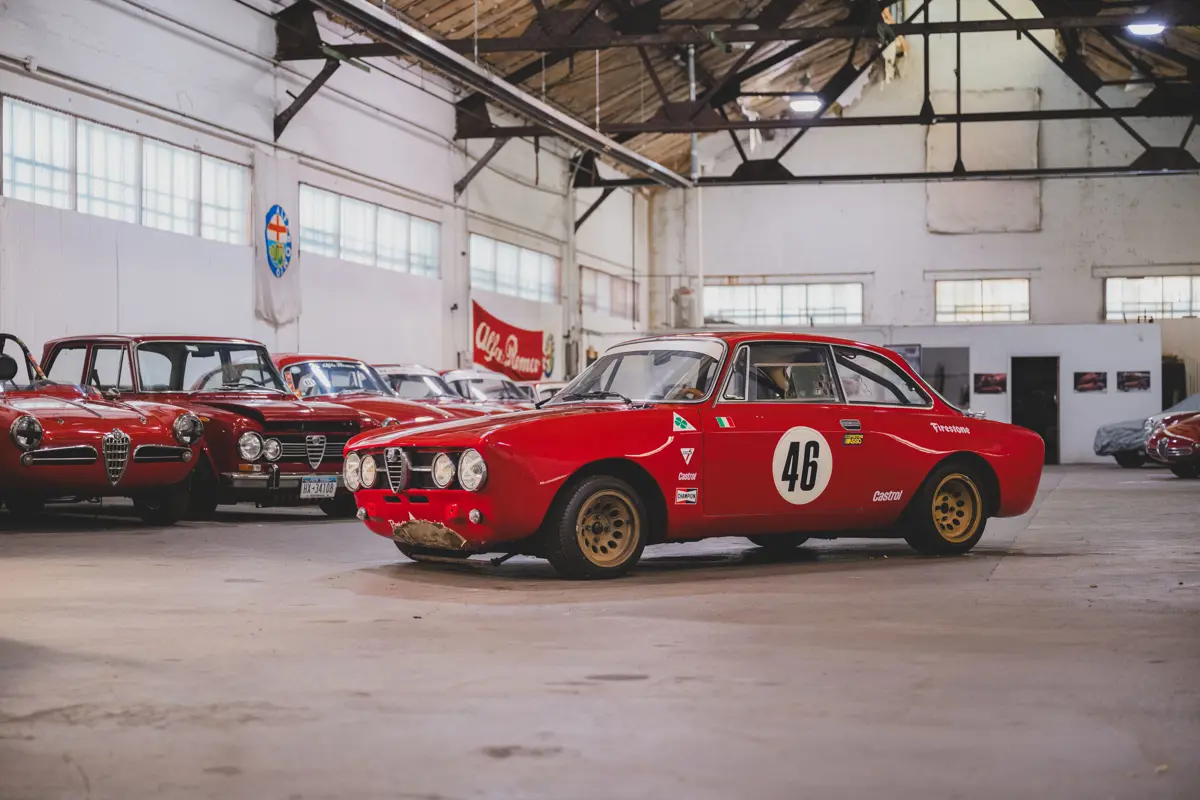
1970 Alfa Romeo 1750 GTAm
The GTAm, or Gran Turismo Alleggerita modificata, was a reaction to increasing competition in touring car racing from the likes of Ford and BMW in the FIA Group 2 class. The 1750 GT Veloce of 1967 provided the ideal base for more power thanks to its longer stroke compared to the earlier 1600 GTA. Bored out to just under 2 litres and equipped with fuel injection, power swelled to 220 brake-horsepower. With a wider track, glassfibre and aluminium panels, and revised suspension, the GTAm ended up being the car to beat in the European Touring Car Championship, with multiple constructors’ championships and drivers’ titles for Toine Hezemans and Andrea de Adamich.
This example was delivered new to Brussels in June 1970 and thrust into racing action immediately by Alfa Romeo Benelux. It was then acquired by West German privateer Franz Abraham of Rosenheim, who raced the car extensively across Europe.
By the mid-1980s, the GTAm had made its way into Switzerland, where it remained until 1988. That year it was purchased by its current owner. The engine was rebuilt and tuned around 2015, but it hasn’t been raced since. Fancy changing that? You’ll need an estimated $200,000 - $250,000.
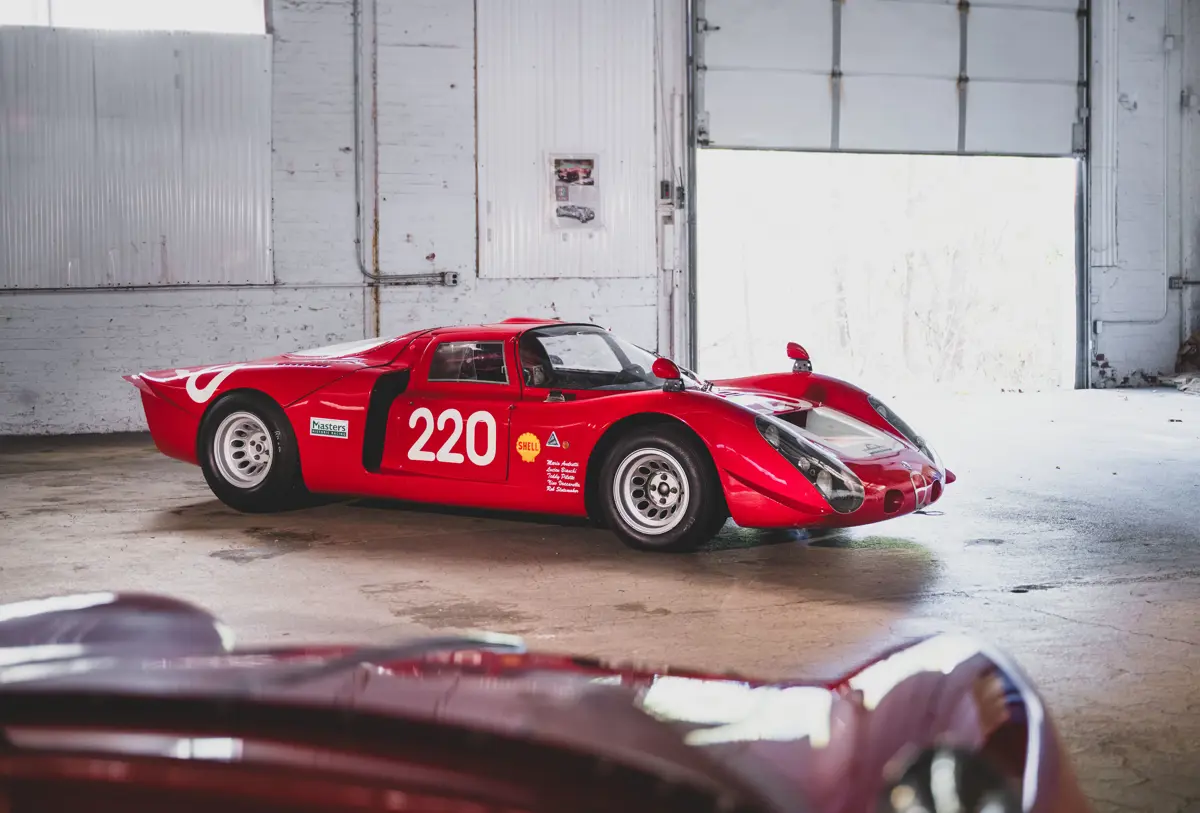
1968 Alfa Romeo T33/2 'Daytona'
Perhaps with an eye on getting one over his former boss Enzo Ferrari, Autodelta’s Carlo Chiti convinced Alfa Romeo to enter the World Sportscar Championship in 1963. However, it would take a long time for the Tipo 33 to be truly successful, with 1971 the turning point ahead of total domination of the 1975 World Championship for Makes. At the heart of it all was the Tipo 33’s compact V-8, which started at 2-litres before swelling to 3-litres, before being replaced with a V-12 in 1973.
However, there were some highlights in the preceding years, and this particular car was a key part of it all. Chassis 015 was one of only a few T33s to run with a 2.5-litre engine, a configuration Autodelta trialled in the 1967–68 Tasman Series before giving it a go in selected races the following year. Chassis 015 ran four events in 1968, with the upsized engine fitted for at least two of them.
It first appeared at the 1968 24 Hours of Daytona, driven by Lucien Bianchi and Mario Andretti. One of three works-entered T33s, it was shaped specifically for Daytona’s demands. The team finished 6th overall, right in the middle of an Alfa 5-6-7 that earned the model its “Daytona” nickname.
By May, it was back out for the Targa Florio with the 2.5-litre engine installed. Local hero Nino Vaccarella surged to 2nd before handing over to Udo Schütz, who spun the car into retirement. At the Nürburgring 1000 KM, Bianchi and Schütz managed a seventh-place overall result. Later that summer, Count Rudy van der Straten entered 015 at the Austrian GP for VDS Racing, and Teddy Pilette and Gustave Gosselin took it to fourth.
The Belgian VDS outfit bought the car outright in 1969. Pilette and Rob Slotemaker campaigned it that year at Monza and Spa, securing solid class finishes and proving the T33’s pace hadn’t faded.
Then came a change of continent. Portuguese racer Antonio Peixinho bought 015 and shipped it to Angola, then a thriving racing scene. There, it picked up multiple wins in 1970 and 1971, including the Nova Lisboa 6 Hours. Santos Peras took over in 1972, winning at Carmona in 1974. Soon after, political unrest saw the car placed into storage by collector Antonio De Santos, alongside a GT40 and Chevron B19. He left them there while he returned to Portugal.
Fast forward to the mid-1980s and French businessman Jean Chambault, working in Angola, caught wind of the Alfa’s existence. A deal was struck with De Santos in Lisbon, with the purchase allegedly predicated on a VCR and a Ford Cortina engine. Extracting the car wasn’t so simple; after strenuous negotiations with the local authorities, it was airlifted out in a C-130 Hercules transport plane.
Back in Europe, the car was restored by Marcello Gambi, an Autodelta veteran. By 2000, 015 was back on track at the Le Mans Classic. It was even road-registered in Germany for a time; one imagines it caused quite a stir at the local petrol station.
In 2006, former skiing champion David Jacobs took ownership. He commissioned further work before entering the car in major historic races including the Le Mans Classic. The next owner acquired it in 2012 and spent more than $115,000 on two engine rebuilds alone.
Still fitted with its rare 2.5-litre engine, chassis 015 is one of just 10 known survivors from the original T33/2 run. Few cars tell a tale quite like it. It is estimated at $1,700,000 - $2,000,000.
RM Sotheby’s annual Monterey sale is a marquee event in the world of car collecting and rarely requires introduction amongst the collector car community. This August, the sale returns to the iconic Portola Hotel and Monterey Conference Center, marking RM Sotheby’s 28th year on the Monterey Peninsula. Known for its unparalleled atmosphere and legacy of offering the world’s very best automobiles, this year’s event is poised to be another unforgettable chapter in the history of this long-standing auction.

